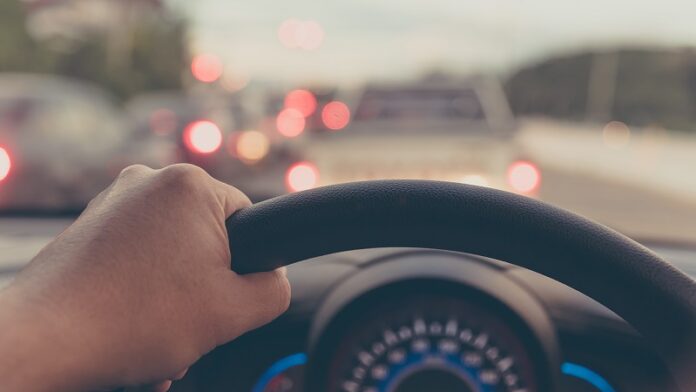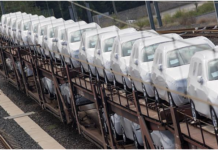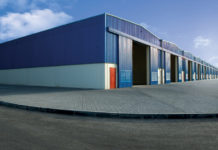The 2020 filmCentigrade follows new parents, Matthew and pregnant Naomi, on Naomi’s road trip book tour. While on their way through Norway in 2002, a whiteout winter storm and impossible driving conditions force the couple to pull over. Thinking they made the responsible choice, Matthew and Naomi decide to sleep in the car, but they wake up the next morning completely covered in an impenetrable cage of icy snow. They have limited food and only a dying Nokia phone to reach the world above the snowpack. A cold, claustrophobic survival story ensues.
The scariest part of the nail-biting film is that it was inspired by real-life events. The director, Brendan Walsh, wrote the script based on multiple true tales of car-trap terror. Take one Swedish man who survived for two months, his car a frozen tomb, before he was found in near-death conditions by snowmobilers. Doctors suspected that the cold temperatures put the man into a hibernation state, as most people can only live one month without food. In 2011, a family was rescued from their 2003 GMC Yukon after being trapped in a blizzard in New Mexico for two days. Just this year, a 68-year-old Sacramento woman was found alive in her car after being stuck in her frozen 4Runner for two weeks.
Often, people do not survive such extreme conditions, and snow isn’t the only danger. Intense heat, winds, rain, and car trouble can all end up leaving unsuspecting drivers stranded on the side of the road. Traffic can result in drivers trapped in the sedans and crossovers for days—days! Like the three-day jam in Bethel, New York, in 1969. The cause Woodstock. Ten times the capacity—500,000 people—crammed their fringed and bell-bottomed bodies through the event gates. The traffic lasted the length of the festival. For daily commutes in congested cities like Los Angeles, drivers spend over 100 hours per year in their cars fighting traffic.
Hopefully, this is enough horror to convince you to be prepared. Other than a fully-charged phone with an arsenal of pre-downloaded podcasts, there are certain items you should have in your vehicle at all times in case of an emergency. Backup items include a change of clothes, a flashlight, food and water, a first aid kit, hygiene items, and extra cash.
A Change of Clothes and Shoes
Keeping a change of clothes in your car can assist in a range of emergencies. Best case scenario, you can use your extra outfit for a wardrobe change after an accidental spill or drip while you’re out. In serious cases, the backup clothing can add extra layers to keep you warm if you are in a cold climate. If heavy eyelids require sleep during a long road trip, you’ll have a fresh outfit for the day. Many potential scenarios warrant extra apparel. But leave the evening gown at home. It goes without saying to pack practical, versatile clothing, so you’re never left naked and afraid.
Flashlights
A flashlight in your vehicle can aid in multiple ways. An everyday carry light can help you find missing keys or other items that may be lost. They are also useful for exploring your surroundings at night. LED flashlights tend to be brighter and can act as a signal when a person is trapped or stranded. LED lights last longer than traditional bulbs, but there is also a variety of rechargeable flashlights available that reduce the risk of being stuck without power. Rechargeable lights are usually powered up with a USB cable. Since most modern cars come with a USB port, this is particularly useful in a vehicle.
Food and Water
Extra food and water can be a matter of life and death in serious situations. When traveling on long road trips, it’s necessary to pack extra nutrition. For day-to-day purposes, a large thermos or water bottle is sufficient. On outdoor or secluded trips, experts recommend one gallon of extra water per person per day for storage. Food with a long-shelf-life, often packaged food, is the simplest way to store backup meals. However, a cooler would allow for healthier, fresh items. This may take up more space than you have. It’s important to consider the purpose of your reserve food and water to determine how much you should carry.
First Aid Kit
In Centigrade, the couple finds an old timey candle in the vehicle for some strange reason. They use it to keep themselves warm. A better, less flammable option is heat pads. Smaller items can be kept in a first aid kit, along with antiseptic, band-aids, gloves, aspirin, and other helpful medicines and bandages that can manage minor issues or give temporary relief to injury or illness.
Hygiene Products
Along those same lines, smaller hygiene products such as deodorant, chapstick, mouthwash, and sunscreen can come in handy. Your time trapped in a car will be more comfortable if you’re physically comfortable. Travel-size toiletriescan accommodate that.
Extra Cash
Most people no longer carry cash and instead rely on their debit and credit cards for everything. But keeping extra money hidden away from the sight could come in handy in case of emergency. While not every store accepts credit cards, like small-town mom and pop shops, you can almost guarantee all businesses accept cash. If you get a flat tire, need to stop for a bite, or need a last-minute hotel for the evening, cash might be your only way to do so. The best thing you can do to prevent a Centigrade-scenario from turning deadly is to be prepared. Keeping these basic items on hand will help you weather the storm that might leave you stranded on the road.








